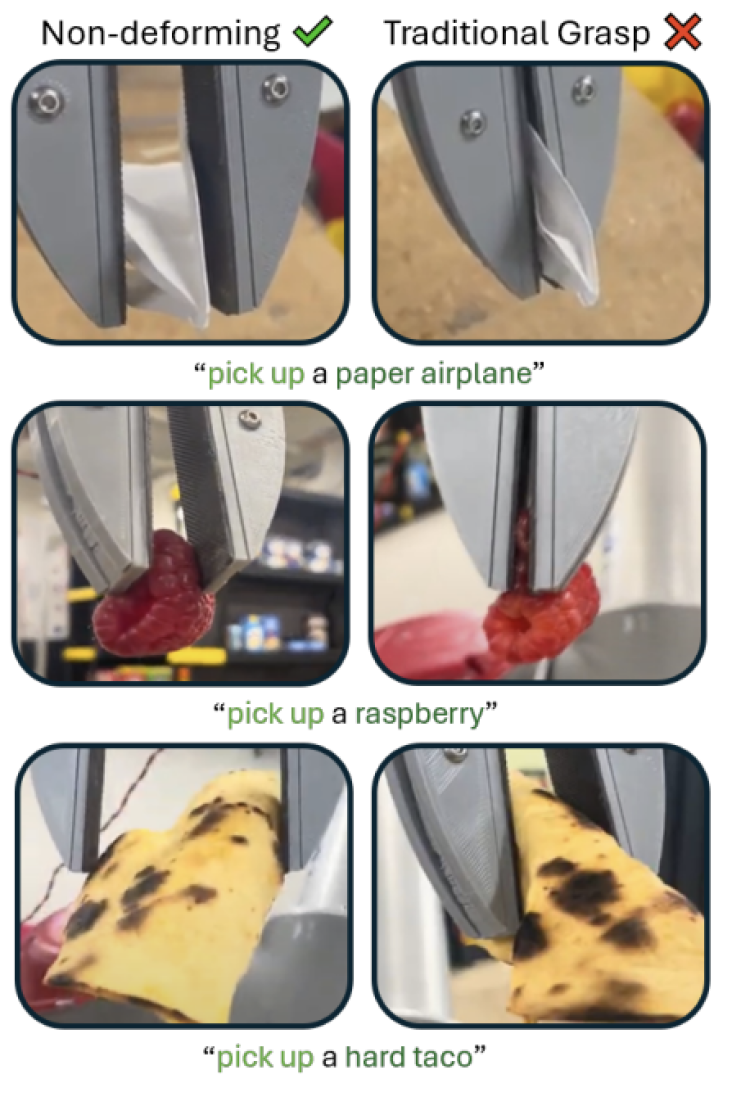
Large language models (LLMs) can provide rich physical descriptions of most worldly objects, allowing robots to achieve more informed and capable grasping. We leverage LLMs’ common sense physical reasoning and code-writing abilities to infer an object’s physical characteristics—mass, friction coefficient, and spring constant —from a semantic description, and then translate those characteristics into an executable adaptive grasp policy. Using a current-controllable, two-finger gripper with a built-in depth camera, we demonstrate that LLM-generated, physically-grounded grasp policies outperform traditional grasp policies on a custom benchmark of 12 delicate and deformable items including food, produce, toys, and other everyday items, spanning two orders of magnitude in mass and required pick-up force. We also demonstrate how compliance feedback from DeliGrasp policies can aid in downstream tasks such as measuring produce ripeness. Our code and videos are available at: https://deligrasp.github.io.
References
Xie, W., Lavering, J. and Correll, N., 2024. DeliGrasp: Inferring Object Mass, Friction, and Compliance with LLMs for Adaptive and Minimally Deforming Grasp Policies. arXiv preprint arXiv:2403.07832.
